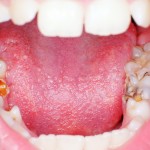
With an increasing understanding of the caries process disease management has moved to a minimally invasive approach. As an alternative caries removal with drills chemo-mecanical approaches have been developed. In the late 1990s a gel-based system (Carisolv®) used with specially designed non-cutting hand instruments was developed. The aim of this review was to evaluate the reliability of the Carisolv® system with respect to drilling regarding the full removal of decayed hard tissues in primary dentition.
Methods
Searches were conducted in the Medline, Web of Science, and Scopus databases. Clinical trials, randomised clinical trials (RCTs) and controlled trials (CCTs) assessing the efficacy on the primary dentition of Carisolv® compared to traditional mechanical caries removal (control) with drilling instruments were considered. Two reviewers independently selected studies. The outcomes considered were: the caries removal rate clinically appreciated (binary yes/no), the time required to complete the tissue removal and the pain threshold during the procedure, assessed by the need for local anesthesia.
Results
- 10 studies involving a total of 348 patients (532 treated teeth) were included
- There were 7 RCTs and 3 CCTs
- 6 trials included only primary teeth with 4 involving permanent teeth
- 3 papers (264 teeth) provided data for the clinical efficacy in decayed tissue removal of the Carisolv® system vs a control group. Complete caries removal was obtained in 100% (151 of 151) of the teeth using Carisolv® and 99.2% (112 of 113) using the drill. When data were combined in meta-analysis, the summary OR was 0.33 (99% CI = 0.01–8.22).
- 7 studies (480 teeth) assessed time required to complete the procedure. Treatment with Carisolv® required a statistically significant greater time amount than that required with the use of rotary instruments.
- for caries removal with Carisolv® ranged from a minimum of 402 s to a maximum of 648 s
- for rotary instruments this ranged from a minimum of 80.7 s to a maximum of 206.7 s
- 4 studies (220 teeth) provided data on pain; 4% of the children requested local anaesthetic with the Carisolv® system compared with 26.8% receiving conventional rotary instrument treatment.
Conclusions
The authors concluded:
The clinical efficacy of chemo-mechanical removal with Carisolv® seems as reliable as the rotary instruments. However, the results should be interpreted cautiously due to the heterogeneity among study designs and to the shortage of available data. Further large-scale, well-designed randomized controlled trials are needed.
Comments
An review by Li et al published in 2014 has also compared Carisolv® with traditional drilling. That review selected only RCTs including 6 compared with the 7 RCTs and 3CCTs included in this review. Both these reviews suffer from the limited quality and heterogeneity within the included studies designs so the results of the review should be treated cautiously. In addition, a number of recent reviews (see links) have focused on partial and step-wise approaches to caries removal suggesting better outcomes with these approaches compared with complete removal as applied in the studies in this review.
Links
Lai G, Lara Capi C, Cocco F, Cagetti MG, Lingström P, Almhöjd U, Campus G. Comparison of Carisolv system vs traditional rotating instruments for caries removal in the primary dentition: A systematic review and meta-analysis. Acta Odontol Scand. 2015 Mar 14:1-12. [Epub ahead of print] PubMed PMID: 25772193.
Li R, Zhao Y, Ye L. How to make choice of the carious removal methods, Carisolv or traditional drilling? A meta-analysis. J Oral Rehabil. 2014 Jun;41(6):432-42. doi: 10.1111/joor.12161. Epub 2014 Mar 24. Review. PubMed PMID: 24661083.
Dental Elf – 18th Nov 2014 – Caries: review suggests complete removal not best approach
Dental Elf – 16th July 2011 – In deep cavities stepwise excavation of caries can preserve pulp

Is caries removal with chemo-mechanical systems effective? http://t.co/q5uUpEUl5A
Caries removal takes longer with chemo-mechanical systems http://t.co/q5uUpEUl5A
Caries removal less painful with chemo-mechanical systems http://t.co/q5uUpEUl5A
RT @TheDentalElf: [Is] Caries removal with a chemo mechanical system effective [?] http://t.co/UpccPKOMNr
Don’t miss – Is caries removal with chemo-mechanical systems effective? http://t.co/q5uUpEUl5A